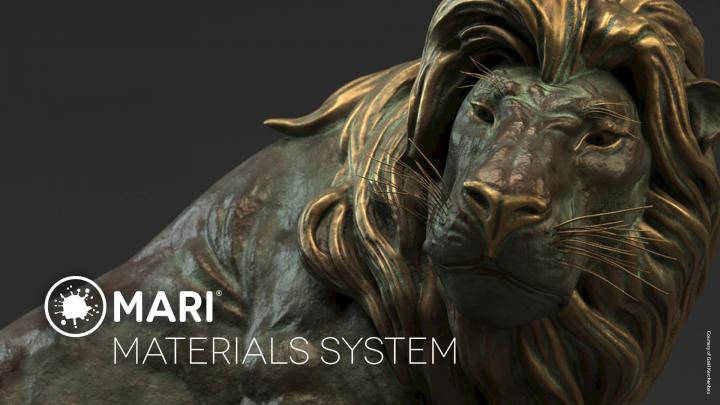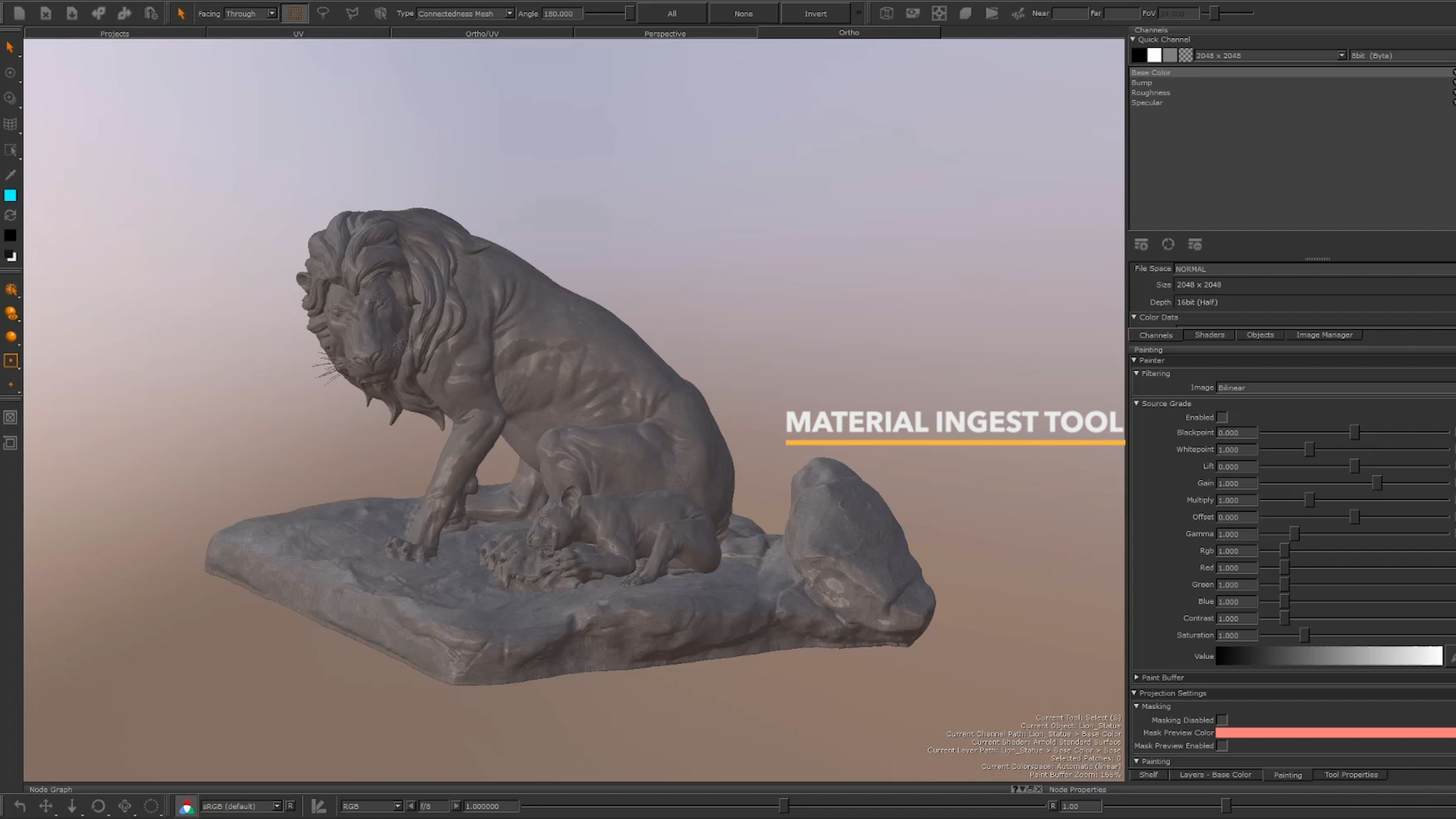Mari 4.6 View Release Notes

Geo-Channels
Mari 4.6’s new Geo-Channels seamlessly integrate into the Materials system, allowing for material looks to be driven by mesh maps, like Curvature and Ambient Occlusion.
Geo-Channels
Syncing Networks to Geo-Channels

Node Graph
Take advantage of Mari’s incredibly powerful Node Graph for material designing, now shipping with an improved user experience.
Collapsible Nodes
Multi-Channel Stream Collapsed Nodes
Improved Node Auto-Placement

New Procedural Nodes
Explore a variety of new procedural patterns and filters in Mari 4.6, enabling you to create more complex, non-destructive node networks inside Materials and your projects.
Projection Nodes
Curvature
New Fractal Nodes
New Patterns
Math Operators
Misc. Utilities

Streamlined Look Development
Mari 4.6 brings two new rendor vendor contributed approximation shaders from the teams at 3Delight and VRay. With Mari’s shaders, the need to round-trip between Mari and Katana, and other DCC programs is reduced, and artists can paint with more confidence, knowing their art will look correct in the final render.
VRay Shader
3Delight Shader

Material System Improvements
Mari 4.6 offers customizable Material file icons and improvements to the Material Ingestion Tool, allowing for more artist customization and extensive automation of the Material creation process.
Customize Material Thumbnails
Ingest Tool can use Custom Thumbnail Images
Ingest Tool can use Custom Material Templates
Ingest Tool can Display Search Results
Mari 4.5 View Release Notes

Discover the Mari Materials System
Mari 4.5 brings a transformative update to the toolset - a new Materials System. Previously, Mari has excelled in creating high quality hero assets. Now, in addition to this formidable painting power, artists have the ability to quickly and easily create less complex, higher-volume assets. The new workflow enables artists to rapidly block out the look of an asset using material presets, without having to start from scratch. They can then use all of the detail-painting power of Mari to weather and finish the final art direction, giving them the best of both worlds in one application.

Easily share material set ups
It’s now much easier to share isolated material set ups across your team for use on new projects. Everything needed to replicate the material gets bundled up, along with source images, into a single file. This can then be passed across to whoever needs it, and they can start working with the material in a few clicks, saving time and eliminating the need to go hunting for files on the network.

Import and use 1000s of texture sets
Found the perfect PBR texture set for your asset? Mari now allows artists to quickly import and convert any set of texture maps into a Mari material preset. The Material Ingest Tool creates the presets, sets up the controls, and loads everything into the Mari shelf ready to use, allowing you to continually grow your material library. That means you can use thousands of PBR texture sets through Mari with very little effort.

Simple layering for materials
For artists who like to work using a layer stack approach, the new Materials workflow has been integrated into Mari’s existing Layer system, allowing for smoother adoption of the Materials System. Material files are applied to a project through simple layering, allowing artists to control the material properties, visibility of each component, and global material visibility, from a single area of the interface. Achieving the specific look you need - such as dust over paint over metal - is now easy and straightforward.

Get full control of material adjustments
Want to make channel-specific adjustments, like tweaking color hue, without affecting all previous layers in the stack? We’ve extended the multi-channel behaviors to a new group layer feature, allowing artists to modify material streams independently of the rest of the layers in the channel. This offers more creative freedom while maintaining full control on the look you’re trying to achieve.

Introducing a new Arnold shader
A new shader allows artists that use the Arnold render engine to paint textures in Mari with a higher degree of confidence that their art will look correct in the final render, reducing feedback loops between Mari and Katana. This shader has been authored and contributed by the Autodesk team behind Arnold.

Do more with the node graph
The node graph is Mari’s powerhouse, and we’ve updated it to enable more controlled complexity than was previously possible. These improvements will make it easier to wield the Node Graph and harness its potential.

Multi-output group node support
Groups nodes now support multiple output ports for additional arbitrary data streams, unlocking more complex workflows. It's now easier to create knobs for gizmos or materials with in-line property promotion; artists can intuitively auto-connect multiple ports when connecting one pair of a set, for a faster and more efficient workflow, and there are simpler methods to access a group node sub-graph.
It really is our main workhorse in the texturing department... It's the only package out there that lets you paint on such enormous heaps of geometry without lag. If you're in the Montreal Framestore texture team, 99% of the time, you're on Mari on most shows.
Adam Goldstein, lead texture artist on Blade Runner 2049 at Framestore
















